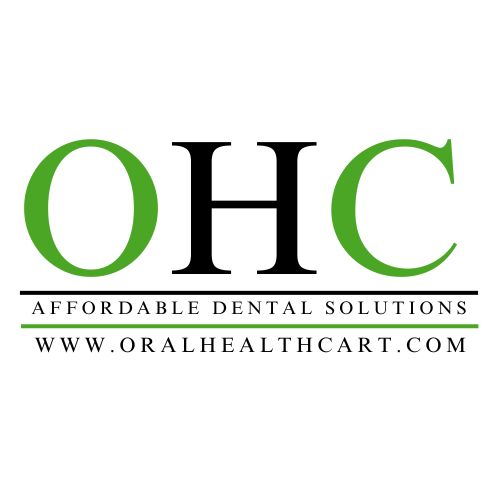Maintenance And Sterilization Tips For Dental Elevators
The Dental Cart
.jpg)
Maintenance And Sterilization Tips For Dental Elevators
Running a dental practice means paying attention not only to patient care but also to the tools that make quality treatments possible. Among these tools, dental elevators play a critical role in tooth extraction and surgical procedures. Because elevators come into direct contact with oral tissues and bone, their maintenance and sterilization are not just important—they’re essential for patient safety, treatment precision, and long-term usability of the instruments. At Oralhealth Cart, we understand that properly maintained dental equipment reflects professionalism and compliance with safety standards.
In this article, let’s explore effective maintenance and sterilization tips for dental elevators, ensuring both longevity of the instrument and maximum protection for patients.
Why Proper Care of Dental Elevators Matters
Dental elevators are precision tools designed to loosen teeth, elevate roots, and assist in atraumatic extractions. However, because they are exposed to saliva, blood, and bone particles, these instruments are at high risk of contamination. If not sterilized and maintained properly, they can lead to:
-
Cross-contamination and infection risk
-
Corrosion or dulling of the blade edges
-
Reduced efficiency during extractions
-
Increased cost of frequent replacements
Therefore, maintaining elevators is not just about keeping them functional—it’s about protecting patients and ensuring compliance with health regulations.
Step 1: Pre-Cleaning Right After Use
Immediately after a procedure, dental elevators should undergo pre-cleaning before sterilization. This helps prevent debris from hardening on the instrument.
-
Rinse under running water to remove visible blood and tissue.
-
Use a soft-bristled brush to gently scrub crevices and working ends.
-
Avoid using abrasive pads that can scratch and weaken the metal surface.
-
If immediate cleaning is not possible, immerse the elevator in an enzymatic solution to prevent drying of debris.
This first step is crucial because sterilization cannot work effectively if organic matter is still present on the instrument.
Step 2: Proper Cleaning Methods
Once pre-cleaned, the elevator should be thoroughly washed using either:
Manual Cleaning
-
Use a neutral pH detergent or enzymatic cleaner.
-
Pay special attention to the blade edges and handle grooves.
-
Rinse thoroughly with deionized or distilled water to prevent mineral deposits.
Ultrasonic Cleaning
-
Place elevators in an ultrasonic cleaner filled with the recommended solution.
-
This method reaches microscopic debris in tight spaces.
-
Typically run for 10–15 minutes depending on the manufacturer’s instructions.
Ultrasonic cleaning is often preferred in modern clinics because it ensures deep cleaning with minimal manual effort.
Step 3: Drying and Inspection
After cleaning, elevators should be completely dried to prevent rust or corrosion. Air-dryers or lint-free cloths work best. Once dry, perform a visual inspection:
-
Check for signs of rust, pitting, or damage.
-
Inspect blade sharpness and alignment.
-
Ensure handles are not loose or cracked.
If any defects are found, set aside the elevator for repair or replacement. Using damaged elevators not only reduces efficiency but also increases patient risk.
Step 4: Sterilization Techniques
Sterilization is non-negotiable in dentistry. The most effective methods for dental elevators include:
Autoclaving (Steam Sterilization)
-
Standard method recommended by most dental associations.
-
Elevators should be packaged in sterilization pouches.
-
Run cycles at the manufacturer-recommended temperature (usually 121–134°C).
Dry Heat Sterilization
-
Suitable for instruments sensitive to moisture.
-
Requires longer sterilization time compared to autoclaves.
Chemical Sterilization (Cold Sterilization)
-
Used when autoclaving is not possible.
-
Elevators are immersed in chemical solutions like glutaraldehyde.
-
Less preferred due to potential chemical residue and longer exposure time.
Whichever method you use, always ensure that sterilization equipment is validated, monitored, and maintained regularly.
Step 5: Storage and Handling
Once sterilized, elevators should be stored correctly to maintain sterility until the next use:
-
Keep them in sterile pouches or cassettes until needed.
-
Store in a clean, dry, and dust-free environment.
-
Avoid mixing sterilized elevators with contaminated instruments.
-
Use instruments in rotation to ensure even wear and longer lifespan.
Extra Tips for Long-Term Elevator Maintenance
-
Lubrication: Some elevators may benefit from occasional lubrication at joints or hinges. Use only medical-grade lubricants compatible with sterilization.
-
Avoid Overloading Autoclaves: Overcrowding prevents proper steam penetration, reducing sterilization effectiveness.
-
Sharpening Blades: If the blade becomes dull, have it professionally sharpened to restore cutting efficiency.
-
Follow Manufacturer Guidelines: Every elevator type may have specific cleaning and sterilization instructions. Always follow them closely.
Common Mistakes to Avoid
-
Skipping pre-cleaning: Leads to ineffective sterilization.
-
Using tap water: Can leave mineral stains and cause corrosion.
-
Improper storage: Exposes sterilized instruments to contaminants.
-
Reusing damaged elevators: Increases treatment risks and can cause injury.
Dental elevators are indispensable tools in extractions and surgical dentistry. To maintain their precision, durability, and safety, dentists must adopt strict maintenance and sterilization practices. At Oralhealth Cart, we emphasize the importance of instrument care not only for compliance but also for enhancing patient trust and delivering the best possible outcomes.
Categories: Prostho Instruments


 Oralhealthcart Products
Oralhealthcart Products

